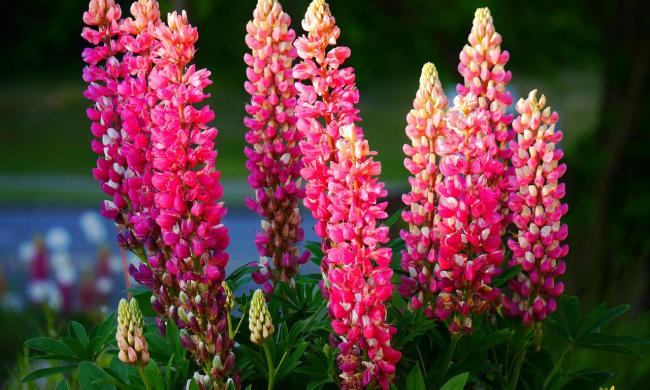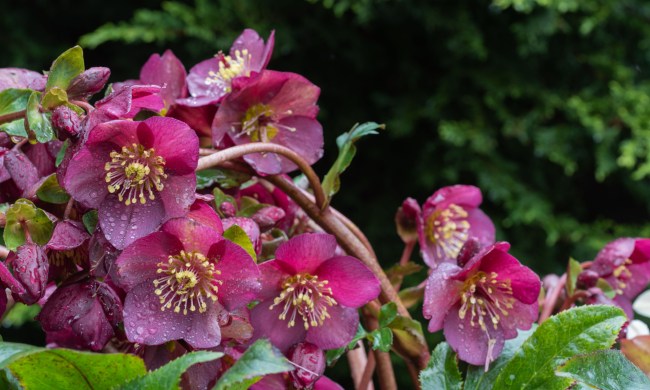When planning an herb and pollinator garden, your mind might jump to rosemary, lavender, thyme, butterfly bushes, and milkweed, but there’s another option you might have missed. Yarrow is a hardy, easy-to-grow flower that pollinators love. With clusters of tiny flowers that can be white, pink, and yellow, these flowers have a simplistic beauty that makes them a great choice for practically any garden aesthetic. If you want to get started growing yarrow plants for yourself, this guide will tell you how.
When and how to plant yarrow

You can start planting yarrow anytime after the last frost of the year, but before the weather gets too hot. Established yarrow plants can withstand heat, but it can put extra stress on a plant that is young or has just been planted. Choose a planting site with well-draining soil and avoid low-lying areas in your garden where water tends to pool. Yarrow plants don’t tolerate standing water. Yarrow flowers can tolerate shade, but they thrive in full sun. If you plant them in shade, be aware that you may need to stake them for extra support, as they tend to get leggy.
Yarrow will grow in almost any soil quality, but richer soil means richer growth. While this sounds great, yarrow plants can get ahead of themselves. If the soil is too rich, they can grow too quickly to support themselves and will need to be staked. Average soil or poor soil with compost mixed into it is perfect for this fast-growing herb.
Not only does it grow quickly, but it also spreads quickly, so be sure to space your plants out by a foot or two. The yarrow will fill in the gaps, but spacing them when planting prevents crowding. If you’re concerned about spreading, growing your yarrow in a container will help keep it from taking over too much garden space.
Caring for yarrow plants

Yarrow is a hardy plant that requires relatively little care. It can tolerate heat and drought, but dry weather can make your yarrow limp or faded. It will survive and perk back up as soon as it has some water. If you want to keep your yarrow looking fresh, you can give in an inch of water per week during dry weather. Deadheading yarrow is not strictly necessary, but it will encourage repeat blooming, as well as keep your garden looking neat.
Since yarrow spreads quickly, dividing them is a good way to control their spread and reduce crowding. You can divide them every two to three years, and while early spring or fall are the recommended seasons, many gardeners find success no matter what season they choose to divide them in. Yarrow is quite hardy.
The benefits of yarrow flowers

Yarrow flowers attract plenty of pollinators, including butterflies, bees, and ladybugs. Ladybugs are particularly helpful to have around your garden, since they eat aphids, mites, and other small garden pests. Attracting pollinators also makes it a beneficial plant for any fruit or vegetable gardens you have, as having more pollinators increases the chances of your other plants getting pollinated.
Yarrow has a history of use as a medicinal herb in several cultures. However, it can be a skin irritant, and can cause health problems when consumed in higher doses, and it’s toxic to pets. While you should consult a healthcare professional before adding yarrow to your health routine, you don’t need to consult anyone to know it is easy to dry and looks lovely in preserved flower decorations.
Pests and diseases

Yarrow only has a few common problems. Aphids are their primary pest, and luckily yarrow’s ability to draw ladybugs can help keep the infestations to a minimum. Be careful with pesticides, since ladybugs and the other pollinators drawn by yarrow flowers can be harmed by them. The biggest issues with yarrow plants are fungal infections, such as powdery mildew, stem rot, root rot, and rust.
Fungal infections can be treated with fungicides and some home remedies like baking soda, but they’re typically easier to avoid than to treat. Fungal infections thrive in wet soil, so be careful when planting and watering your yarrow. Plant it where it will have proper drainage, and only water it when the soil is dry. Avoid getting the leaves wet when watering your yarrow as well. Fungal spores carried by the wind land on leaves, then spread and grow when introduced to water.
Pollinators and gardeners alike love this hardy plant, and now you can add it to your garden as well! As long as you plant them somewhere with proper drainage, your yarrow flowers are sure to thrive and spread. Yarrow pairs well with most other plants that are commonly included in pollinator seed mixes, including salvia, lavender, and rosemary, so if you already have an established pollinator garden, adding some yarrow shouldn’t be a problem. Of course, you can always contain their spread by adding them to a container garden instead.




